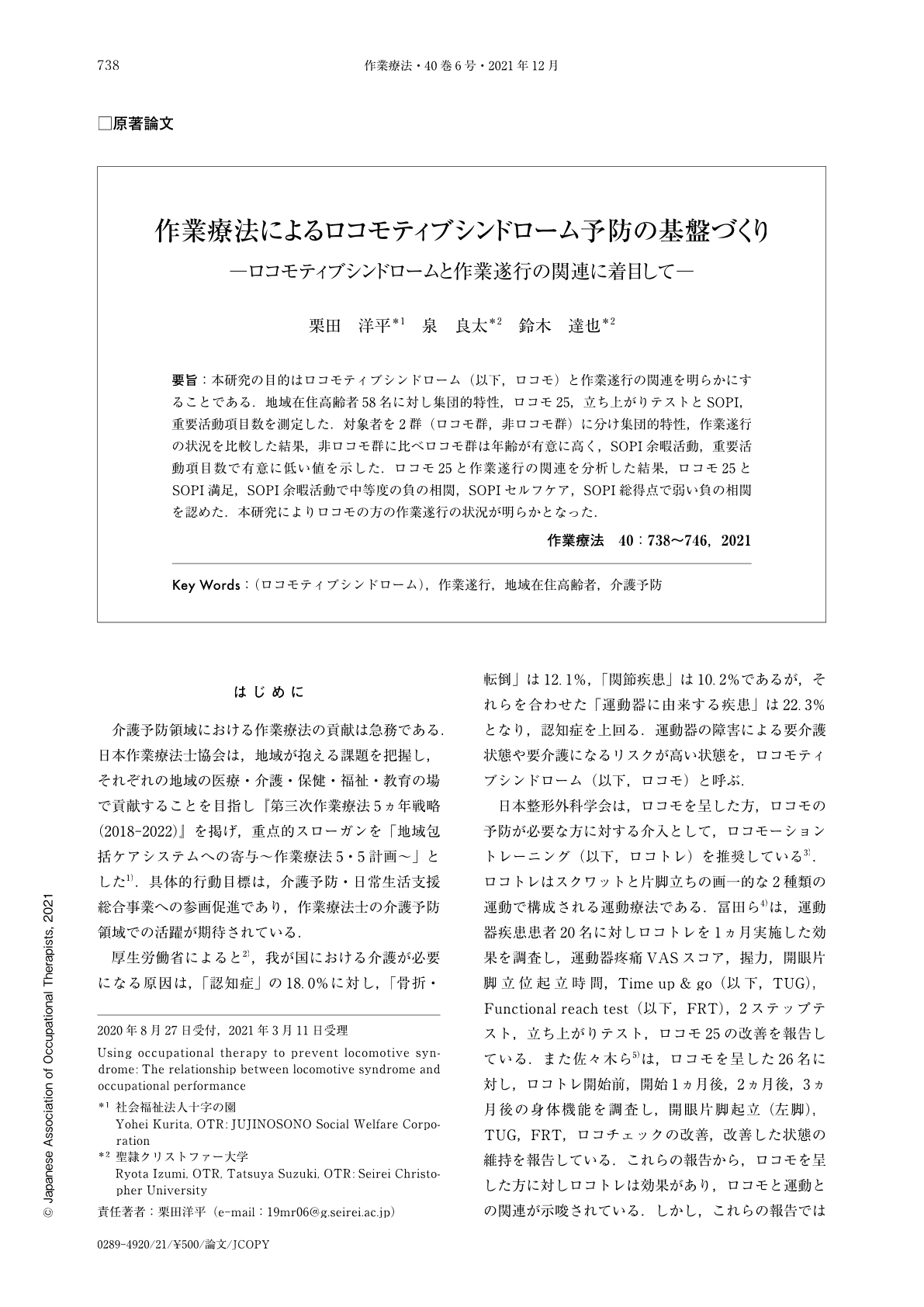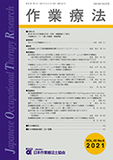Japanese
English
- 販売していません
- Abstract 文献概要
- 1ページ目 Look Inside
- 参考文献 Reference
- サイト内被引用 Cited by
要旨:本研究の目的はロコモティブシンドローム(以下,ロコモ)と作業遂行の関連を明らかにすることである.地域在住高齢者58名に対し集団的特性,ロコモ25,立ち上がりテストとSOPI,重要活動項目数を測定した.対象者を2群(ロコモ群,非ロコモ群)に分け集団的特性,作業遂行の状況を比較した結果,非ロコモ群に比べロコモ群は年齢が有意に高く,SOPI余暇活動,重要活動項目数で有意に低い値を示した.ロコモ25と作業遂行の関連を分析した結果,ロコモ25とSOPI満足,SOPI余暇活動で中等度の負の相関,SOPIセルフケア,SOPI総得点で弱い負の相関を認めた.本研究によりロコモの方の作業遂行の状況が明らかとなった.
The purpose of this study was to substantiate the relationship between locomotive syndrome (Locomo) and occupational performance. A total of 58 elderly living in the community participated in this study. Measurement items were comprised of the 25-question Geriatric Locomotive Function Scale, standing test, Self-completed Occupational Performance Index (SOPI), and a number of important activities. The subjects were divided two groups: the Locomo group and the non-Locomo group, and the locomotive syndrome and occupational performance were compared. As a result, age was higher in the Locomo group than in the non-Locomo group, and SOPI leisure and the number of important activities were lower in the Locomo group than in the non-Locomo group. Analyzing the relationship between the 25-question Geriatric Locomotive Function Scale and occupational performance indicated a moderate negative correlation between the 25-question Geriatric Locomotive Function Scale and SOPI satisfaction, and the 25-question Geriatric Locomotive Function Scale and SOPI leisure. Furthermore, there were poor negative correlations between the 25-question Geriatric Locomotive Function Scale and SOPI self-care,and the 25-question Geriatric Locomotive Function Scale and SOPI total score. This study reveals Locomo's occupational performance.

Copyright © 2021, Japanese Association of Occupational Therapists. All rights reserved.


